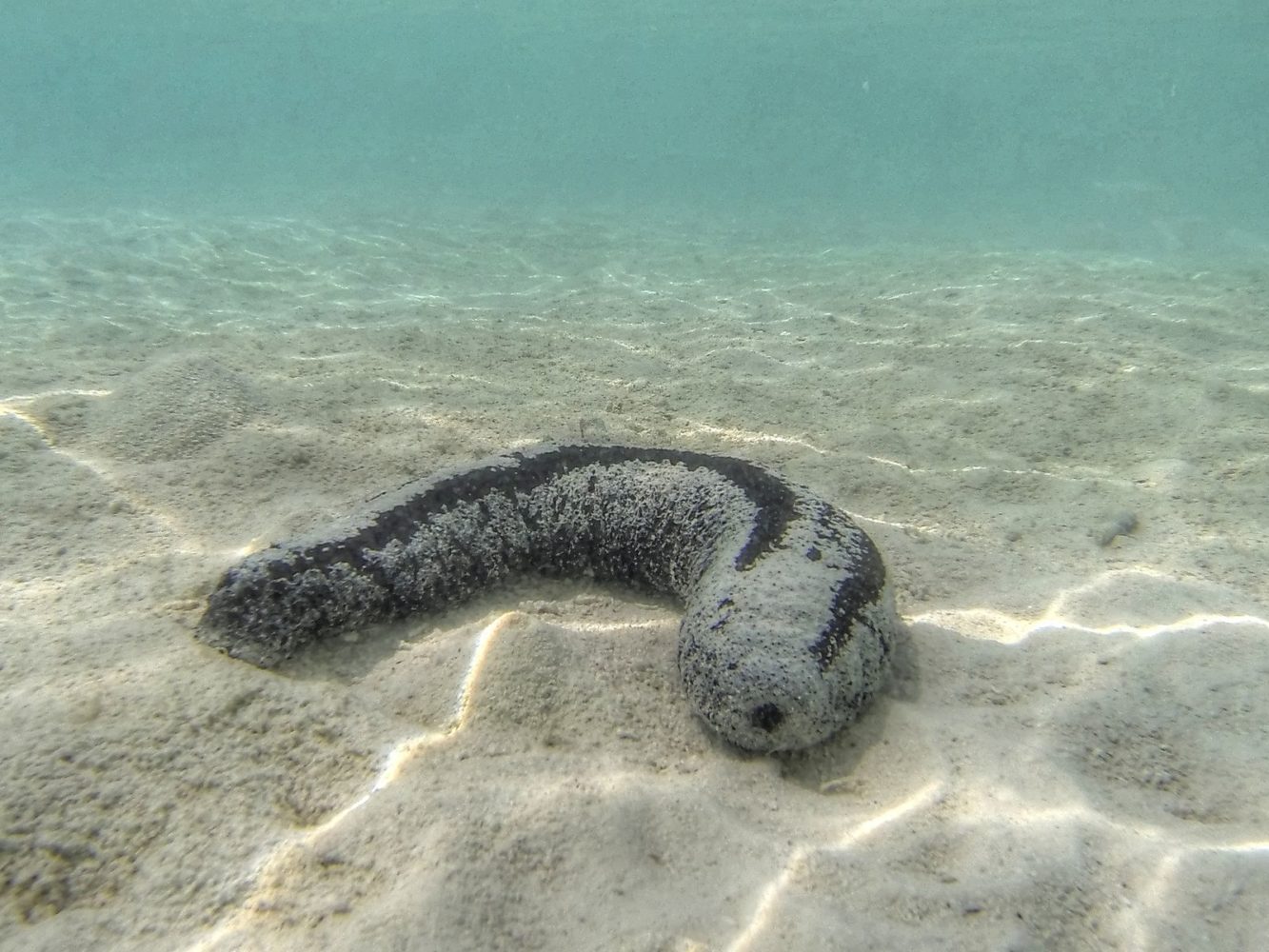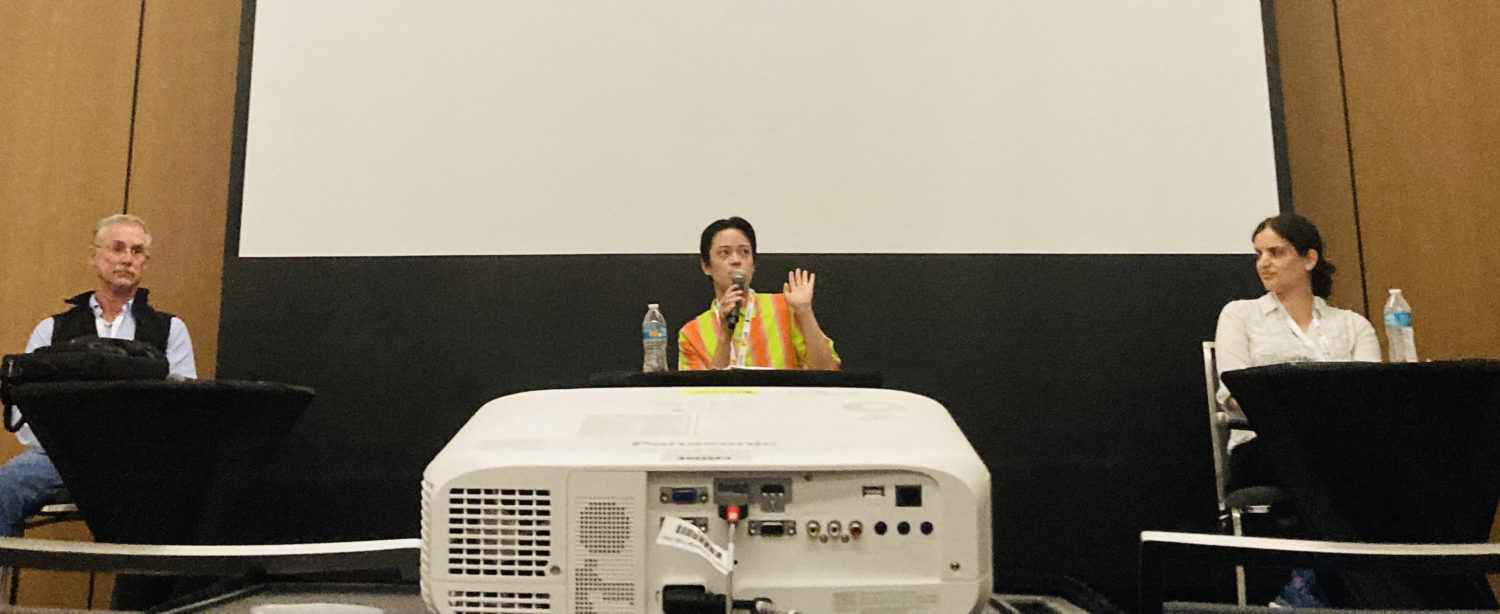
Finding high stakes and big stories in the lives of lowly critters
David Quammen captured the attention of writers attending ScienceWriters2022 with an anecdote about the sea cucumber (here, pictured in the Maldives) in a session providing tips on how writing about the lives of weird creatures can be a way to explore higher stakes and bigger stories. (Photo © Nevit Dilmen, CC Attribution-Share Alike 3.0 Unported)
Consider the sea cucumber. That was author David Quammen’s (@DavidQuammen) request to the audience at a recent ScienceWriters conference in Memphis, Tenn.
There was an irony to these instructions, which came in a session on how to write creatively about underappreciated, uncharismatic organisms. The session was part of the professional development program organized at ScienceWriters2022 by the National Association of Science Writers. Some writers may have difficulty convincing editors to let them write about blobby invertebrates. But in the discussion led by journalist and North Carolina State University faculty member Maya Kapoor (@Kapoor_ML) on Oct. 22, sea cucumbers found an eager audience.
Quammen described how the sea cucumber, when infected by a parasitic pearlfish, shoots its guts out of its anus and regenerates a new set of internal organs. The other panelists, Defector writer Sabrina Imbler (@aznfusion) and freelance science journalist Mara Grunbaum (@maragrunbaum), nodded knowingly. The crowd leaned forward in their seats.
But most of the time, science writers aren’t writing for other science writers. So, how to capture the reader’s interest? The three speakers offered suggestions on writing compellingly about the world’s weirdest creatures — and how they can be a way to explore higher stakes and bigger stories.
Humble creature, high stakes
The session, called “Synecdoche and Science Writing,” took its name from an essay in which Quammen uses trout to explain why he moved to Montana. He loved fly fishing and had worked as a fishing guide. But trout were also an indicator species, he explained, meaning the health of the trout reflects the health of its home ecosystem. To love trout was to love Montana; to protect the trout was to protect the wilderness of Montana itself.

As a figure of speech, a synecdoche is a part that can stand in for the whole — like “mouths” in “hungry mouths to feed.” In writing, Quammen defines synecdoche as a fact that also has relevance as a symbol. Whether it’s Imbler’s parasitic worm or Grunbaum’s whale barnacles, the facts of these organisms’ lives offer rich worlds to explore larger, often abstract, ideas like resilience or journeys across space and time.
Building empathy
Does this writing ever veer into anthropomorphism? Writers may worry that attributing human qualities or characteristics to things that aren’t human will draw the disapproval of scientists.
Grunbaum offered another way to look at it. During a volunteer training at the Seattle Aquarium, she was encouraged to give animals occupations, character traits, and personal pronouns like he, she, or they. It can be a way of building empathy, she learned. Every organism has needs and faces obstacles. Describing a creature’s life in these terms can help readers appreciate organisms and ecosystems they might otherwise pay little attention to.
Imbler recommended being honest with your readers when doing this kind of writing. Flag what is your own speculation. Imbler said they’re careful to couch such explorations as their own musings, rather than ascribing them to the facts of a particular creature’s existence.
Exercising curiosity
Kapoor asked the panel which came first: fixation with a critter, or the themes each critter would help them explore. Critter first, the writers agreed. Obsession sets in, then they search for the right news hook to write about the organisms.
That means writers should expose their minds to new things and be alert for inspiration. For Imbler, that looks like reading up on the latest taxonomy news. Not every new scorpion species detailed in the pages of the biodiversity research journal ZooKeys may turn into a story, Imbler said, but reading about new things exercises curiosity.